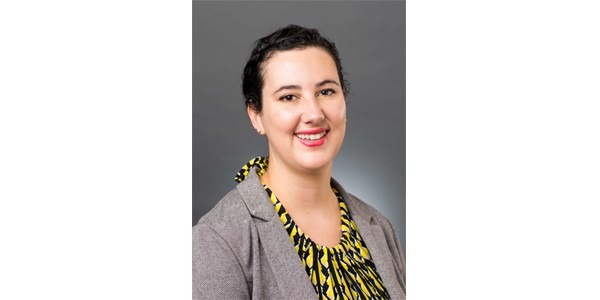Teaching engineering students to create thoughtful, user-focused design, and connecting her students with clinicians and public health experts is Soraya Bailey’s professional passion.

Soraya Bailey, lecturer and design instructor for the Master’s of Applied Bioengineering program.
Bailey joined the UW Department of Bioengineering in August as a full-time lecturer and design instructor for the Master of Applied Bioengineering program. Before joining UW, she taught the capstone course Mechanical Engineering Senior Design at Johns Hopkins University. Her previous work as a mechanical design engineer at Tangent Design Engineering gave her first-hand industry experience in biomedical, general consumer, and oil and gas product areas.
Although she enjoyed doing product development and design, she recognized that she especially liked teaching it to others. She had been an adjunct teaching professor at the University of Calgary, where she got her master’s in biomedical engineering, and she found it thrilling when she saw students make connections between theory learned and real-life application.
Successful product designers are able to accurately interpret a client’s needs, understand what would improve the situation for client and patient, and then bring those ideas to life through engineering design, Bailey says. “I’ve come to realize that it’s the combination of empathy and client understanding with really important technical skills.”
Building common language through detailed interviews or spending time in the clinic setting is key to creating that understanding. It’s not easy for engineers to talk to clinicians, Bailey says, as they often explain concepts differently. She teaches her students to explore what specific problems clinicians face and question every step of a procedure until they find the root cause of the issue. It could be a problem with methodology, or that the technology exists but it’s not translated well, or that it’s not ergonomic or user-friendly. “It’s through immersion that you start understanding your client, whether it be a clinician or industry partner,” Bailey says.
One of Bailey’s goals is to expand the department’s industry partnerships, strengthening the triangle of industry experts, clinicians and master’s students. She envisions a robust symbiotic system that includes student mentorships. “Students will be generating awesome ideas, but the clinicians won’t have time or the know-how to further develop those ideas,” Bailey says. Companies and public health organizations generally want access to good ideas and a user population, but they don’t always have access to either. “By bringing in the industry side to the program it completes this triangle by exposing industry to a large user base, getting really great ideas from the students, and potentially even having interns join their company,” she says.
Based on her early impressions of the department, Bailey appreciates its culture of equality and camaraderie. She also values that there’s female leadership, as that’s not yet as common in engineering, and that this models success for future women in the field.
In her free time, Bailey enjoys running cooking experiments in her kitchen. After following a recipe as written the first time, she’ll learn from it and begin making scientific changes. “I consider recipes, in some ways, design instructions,” she says. “I have copious notes on my recipes, the various modifications and what happens. You look at how others have approached it before you. Most of the time I make something that’s really tasty, and once or twice, it’s gone right in the garbage.” She learned to master pie crust, however, from one of her grandmothers. Her favorite pie to make is a brown butter bourbon pecan pie. “With half a pound of butter in one pie, it’s not exactly waistline friendly, but it’s delicious.”



